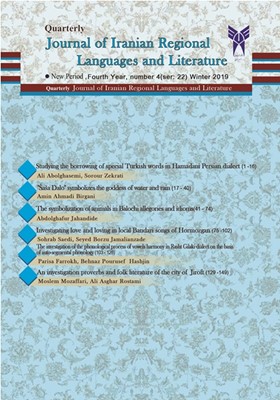-
-
List of Articles
-
Open Access Article
1 - Studying the borrowing of special Turkish words in Hamadani Persian dialect
ali abolghasemi sorour zekrati -
Open Access Article
2 - "Šaša Dalo" symbolizes the goddess of water and rain
Amin Ahmadi birgani -
Open Access Article
3 - The symbolization of animals in Balochi allegories and idioms
Abdolghafur Jahandide -
Open Access Article
4 - Investigating love and loving in local Bandari songs of Hormozgan
Sohrab Saedi Seyed Borzu Jamalianzade -
Open Access Article
5 - The investigation of the phonological process of vowels harmony in Rasht Gilaki dialect on the basis of auto-segmental phonology
Shahin Sheykhsangtajan Behanaz Pourusef Hashjin -
Open Access Article
6 - proverbs and folk literature review of the city of Jiroft
Moslem Mozaffari Ali Asghar Rostami
-
The rights to this website are owned by the Raimag Press Management System.
Copyright © 2021-2025







